Category
Popular Articles
- AI (12)
- Android (38)
- App Suggest (4)
- Apple (15)
- Apple TV (2)
- Bluetooth (3)
- Cars (2)
- ChatGpt (1)
- Chrome (2)
- Did you know? (1)
- E-Commerce News (1)
- Ecommerce Websites business (7)
- Electronics Shopping (5)
- Fashion Tips (3)
- Gaming (4)
- Google Gemini (3)
- Hair Care Tips (2)
- How to (13)
- iCloud (1)
- Infotainment System (1)
- Iphone (101)
- Job Posting (1)
- Lifestyle (3)
- Mac (20)
- Mobile Games (1)
- Netflix (1)
- Online Shopping Websites (2)
- Personal Finance Management (3)
- Product Reviews (3)
- Roku TV (4)
- Samsung (9)
- Shopping Tips (10)
- Spotify (1)
- Tech (93)
- Windows 11 (19)
- Zero Waste (3)
Discounted Products
-
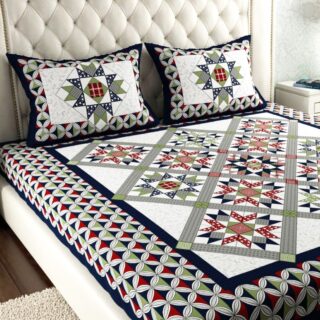 Leo Creation 144 TC Cotton Double Jaipuri Prints Flat Bedsheet(Pack of 1, Blue, Gree, Red, Grey, Light Grey)
Leo Creation 144 TC Cotton Double Jaipuri Prints Flat Bedsheet(Pack of 1, Blue, Gree, Red, Grey, Light Grey)
₹2,999.00Original price was: ₹2,999.00.₹329.00Current price is: ₹329.00. -
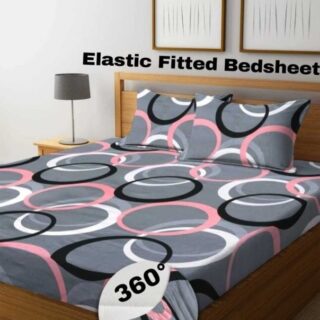 Home Garage 210 TC Cotton King Floral Fitted (Elastic) Bedsheet(Pack of 1, Grey)
Home Garage 210 TC Cotton King Floral Fitted (Elastic) Bedsheet(Pack of 1, Grey)
₹999.00Original price was: ₹999.00.₹299.00Current price is: ₹299.00. -
 Goodrik 140 TC Cotton Double 3D Printed Flat Bedsheet(Pack of 1, Brown)
Goodrik 140 TC Cotton Double 3D Printed Flat Bedsheet(Pack of 1, Brown)
₹499.00Original price was: ₹499.00.₹229.00Current price is: ₹229.00. -
 GLOBALSHOP 350 TC Microfiber Double Floral Flat Bedsheet(Pack of 1, Multicolor)
GLOBALSHOP 350 TC Microfiber Double Floral Flat Bedsheet(Pack of 1, Multicolor)
₹1,250.00Original price was: ₹1,250.00.₹263.00Current price is: ₹263.00. -
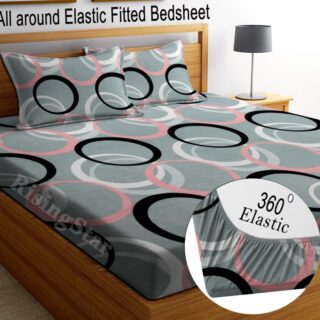 RisingStar 250 TC Microfiber King Printed Fitted (Elastic) Bedsheet(Pack of 1, FITTED-ROUND-CIRCLES-PREMIUM)
RisingStar 250 TC Microfiber King Printed Fitted (Elastic) Bedsheet(Pack of 1, FITTED-ROUND-CIRCLES-PREMIUM)
₹2,299.00Original price was: ₹2,299.00.₹299.00Current price is: ₹299.00. -
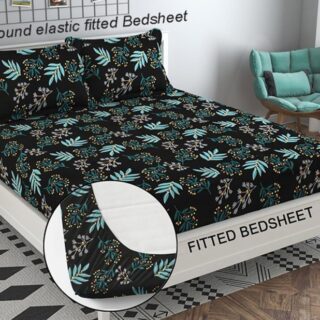 Home Garage 210 TC Cotton King Floral Fitted (Elastic) Bedsheet(Pack of 1, Fitted Black Green)
Home Garage 210 TC Cotton King Floral Fitted (Elastic) Bedsheet(Pack of 1, Fitted Black Green)
₹1,299.00Original price was: ₹1,299.00.₹299.00Current price is: ₹299.00. -
 Home Garage 180 TC Cotton King 3D Printed Flat Bedsheet(Pack of 1, White)
Home Garage 180 TC Cotton King 3D Printed Flat Bedsheet(Pack of 1, White)
₹999.00Original price was: ₹999.00.₹229.00Current price is: ₹229.00. -
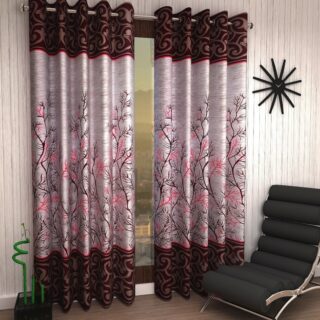 Home Sizzler 153 cm (5 ft) Polyester Room Darkening Window Curtain (Pack Of 2)(Floral, Maroon)
Home Sizzler 153 cm (5 ft) Polyester Room Darkening Window Curtain (Pack Of 2)(Floral, Maroon)
₹799.00Original price was: ₹799.00.₹299.00Current price is: ₹299.00. -
 Panipat Textile Hub 152.4 cm (5 ft) Polyester Window Curtain (Pack Of 2)(Solid, Aqua)
Panipat Textile Hub 152.4 cm (5 ft) Polyester Window Curtain (Pack Of 2)(Solid, Aqua)
₹1,899.00Original price was: ₹1,899.00.₹299.00Current price is: ₹299.00. -
 Home Sizzler 214 cm (7 ft) Polyester Semi Transparent Door Curtain (Pack Of 2)(Floral, Maroon)
Home Sizzler 214 cm (7 ft) Polyester Semi Transparent Door Curtain (Pack Of 2)(Floral, Maroon)
₹1,199.00Original price was: ₹1,199.00.₹399.00Current price is: ₹399.00. -
 Home Sizzler 153 cm (5 ft) Polyester Room Darkening Window Curtain (Pack Of 2)(Floral, Brown)
Home Sizzler 153 cm (5 ft) Polyester Room Darkening Window Curtain (Pack Of 2)(Floral, Brown)
₹799.00Original price was: ₹799.00.₹299.00Current price is: ₹299.00. -
 Stella Creations 214 cm (7 ft) Polyester Room Darkening Door Curtain (Pack Of 2)(Abstract, Brown)
Stella Creations 214 cm (7 ft) Polyester Room Darkening Door Curtain (Pack Of 2)(Abstract, Brown)
₹1,299.00Original price was: ₹1,299.00.₹449.00Current price is: ₹449.00. -
 Homefab India 152.5 cm (5 ft) Polyester Room Darkening Window Curtain (Pack Of 2)(Floral, Light Blue)
Homefab India 152.5 cm (5 ft) Polyester Room Darkening Window Curtain (Pack Of 2)(Floral, Light Blue)
₹1,199.00Original price was: ₹1,199.00.₹319.00Current price is: ₹319.00. -
 Urban Home 214 cm (7 ft) PVC Transparent Door Curtain Single Curtain(Solid, Off White)
Urban Home 214 cm (7 ft) PVC Transparent Door Curtain Single Curtain(Solid, Off White)
₹699.00Original price was: ₹699.00.₹203.00Current price is: ₹203.00. -
 Panipat Textile Hub 213 cm (7 ft) Polyester Door Curtain (Pack Of 2)(Solid, Brown)
Panipat Textile Hub 213 cm (7 ft) Polyester Door Curtain (Pack Of 2)(Solid, Brown)
₹1,199.00Original price was: ₹1,199.00.₹349.00Current price is: ₹349.00.
Affiliate Links
Promotion

Hey friends! I’m Jessica 👋 and if you’ve ever stared at your iPhone screen and wondered why the colors pop so beautifully, or why black areas look truly black, this one’s for you. Today, we’re breaking down everything about OLED screens in iPhones — which models have them, how they differ from LCDs, and why Apple made the switch in the first place.
I’ve used nearly every iPhone since the iPhone 6, and I still remember how mind-blowing the display looked the first time I tried the iPhone X — Apple’s first iPhone with an OLED display. So, let’s dive in and find out exactly what makes OLED screens so special.
What Exactly Is an OLED Screen?
Let’s start with the basics.
OLED stands for Organic Light-Emitting Diode. Unlike older LCD (Liquid Crystal Display) panels, which use a backlight to illuminate all pixels, OLED screens generate their own light — each pixel lights up individually.
That means when your iPhone displays black, those pixels actually turn off completely, resulting in deep blacks, better contrast, and energy savings.
In short:
- OLED = self-lit pixels (better contrast, richer colors)
- LCD = backlit pixels (brighter whites, but less contrast)
Apple uses Super Retina and Super Retina XDR as their branding names for OLED displays.
Which iPhones Have OLED Screens?
Now, this is the question most people ask — “Does my iPhone have an OLED screen?”
Here’s a full breakdown 👇
🔸 iPhones With OLED Displays:
- iPhone X – First OLED iPhone (2017)
- iPhone XS / XS Max
- iPhone 11 Pro / 11 Pro Max
- iPhone 12 / 12 mini / 12 Pro / 12 Pro Max
- iPhone 13 / 13 mini / 13 Pro / 13 Pro Max
- iPhone 14 / 14 Plus / 14 Pro / 14 Pro Max
- iPhone 15 / 15 Plus / 15 Pro / 15 Pro Max
- iPhone 16 Series (expected all OLED in 2024–2025 lineup)
🔹 iPhones Without OLED (LCD Displays):
- iPhone 6, 6s, 7, 8
- iPhone SE (1st, 2nd, and 3rd Gen)
- iPhone XR
- iPhone 11 (non-Pro model)
Basically, anything from iPhone 12 onward — including both regular and Pro models — comes with OLED screens.
Why Apple Switched to OLED Displays
Apple stayed with LCD panels for years because they were reliable, affordable, and color-accurate. But OLED offered something Apple couldn’t ignore — perfection in contrast and energy efficiency.
Here’s what OLED brought to the iPhone lineup:
- Perfect Blacks – Since pixels turn off completely, you get infinite contrast.
- Vivid Colors – OLED supports a wider color range (HDR, DCI-P3).
- Thinner Displays – No need for a backlight, allowing sleeker designs.
- Power Efficiency – Black themes and dark modes consume less power.
- Always-On Display (AOD) – Available on newer iPhones like 14 Pro and 15 Pro, made possible because OLED can light only specific pixels.
Do OLED Screens Save Battery?
Yes — but it depends on your usage.
Since OLED screens light up only the pixels that are needed, displaying dark themes or wallpapers uses less power. If you often use Dark Mode, you’ll notice slightly better battery life.
However, if you constantly view bright images or white screens, battery usage is similar to or even higher than LCDs.
Pro Tip: Use black wallpapers and enable “Dark Mode” to save up to 15–20% battery on OLED iPhones.
OLED vs LCD — Visual Comparison
Let’s see how these two screen technologies differ:
| Feature | OLED | LCD |
|---|---|---|
| Contrast | Infinite (true black) | Limited (grayish blacks) |
| Brightness | Very high on modern OLED | Good, but not as deep contrast |
| Power Usage | Efficient on dark screens | Always-on backlight consumes more |
| Thickness | Thinner (no backlight) | Thicker |
| Color Accuracy | More vibrant | Natural but less contrasty |
| Cost | Expensive | Cheaper |
If you compare the iPhone 11 (LCD) with the iPhone 11 Pro (OLED), you’ll immediately notice richer blacks and more immersive colors on the Pro model.
Drawbacks of OLED Screens
As much as I love OLED screens, they aren’t perfect. Here are a few things to keep in mind:
- Burn-In Risk: Static elements (like icons or text) can leave faint marks over years.
- Higher Cost: OLED displays are more expensive to repair — around $250–$400 USD if damaged.
- Color Shift: Some older OLED screens show slight tint changes when viewed at angles.
Thankfully, Apple’s OLED panels are top-tier quality and use advanced calibration and software protection to reduce burn-in risk significantly.
How to Check if Your iPhone Has an OLED Screen
Not sure what display type your iPhone has? Here’s how you can check:
- Go to Settings → Display & Brightness.
- Turn on Dark Mode.
- Open a black image or website.
- In a dark room, if black areas look truly black (not gray), it’s OLED.
You can also look up your model number on Apple’s official website, which mentions the display type.
The Evolution of Apple’s OLED Technology
Apple didn’t just adopt OLED — it refined it.
- iPhone X (2017): First OLED display; Super Retina HD
- iPhone 11 Pro (2019): Brighter, better color calibration
- iPhone 12 (2020): OLED across all models
- iPhone 13 (2021): More efficient LTPO OLED with ProMotion (120Hz)
- iPhone 14/15 (2022–2023): Always-On Display and higher peak brightness (up to 2,000 nits)
Every generation, Apple improves display brightness, color consistency, and energy management. The iPhone 15 Pro, for example, uses LTPO Super Retina XDR OLED, which dynamically adjusts refresh rates from 1Hz to 120Hz for smooth scrolling and better battery life.
OLED and HDR: The Perfect Combo
One reason movies and videos look stunning on your iPhone is HDR (High Dynamic Range). OLED panels can display brighter highlights and darker shadows simultaneously, making scenes feel cinematic.
If you watch Netflix, YouTube, or Apple TV+ on an OLED iPhone, you’ll see how lifelike and detailed the visuals are.
How to Take Care of Your OLED Display
Here are a few tips to keep your iPhone’s OLED display looking great for years:
- Avoid static content for too long. Don’t leave the same image on for hours.
- Use Auto-Lock (Settings → Display → Auto-Lock → 1–2 minutes).
- Keep brightness on Auto. The iPhone automatically adjusts it to prevent overuse.
- Enable Dark Mode. Saves battery and reduces strain on OLED pixels.
- Use screen savers or live wallpapers. Keeps the screen dynamic.
Are All OLEDs the Same?
Not quite. Apple sources OLED panels mainly from Samsung Display and LG Display, both known for premium quality. The iPhone Pro models often get LTPO OLED, which supports variable refresh rates and higher brightness levels.
Regular models (like iPhone 14 or 15) use LTPS OLED, still excellent but not as power-efficient.
So, even though both are OLED, Pro models always have slightly better display tech.
To wrap it up, yes — modern iPhones absolutely have OLED screens, and they’re among the best in the industry.
From the iPhone X to the iPhone 16 series, OLED has transformed how we experience colors, brightness, and battery life. The blacks are richer, the contrast is sharper, and the visuals are more immersive than ever before.
As someone who’s used both LCD and OLED iPhones, I can tell you this: once you’ve experienced Apple’s OLED display, it’s nearly impossible to go back. The colors feel alive, the videos pop, and your favorite games look stunning.
So whether you’re watching a movie, editing photos, or just scrolling through Instagram — you’re enjoying one of the most advanced display technologies ever made.
By Jessica – Tech Blogger from the USA 🇺🇸
Written by Bazaronweb
Latest Tech Articles
- Steps to Enable Emergency Restart in Windows 11

- 3 Easy Ways to Find Your Laptop Serial Number

- 5 Ways to Backup and Restore Registry Settings in Windows

- iMessage Not Syncing Between iPhone & Mac? 8 Proven Ways to Fix Account & Device Issues

- Outlook Not Receiving Emails? 8 Proven Fixes for Windows, Mac & Mobile

Products
-
![Apple Watch Ultra 3 [GPS + Cellular 49mm] Running & Multisport Smartwatch w/Rugged Titanium Case w/Black Titanium Milanese Loop - M. Satellite Communications, Advanced Health & Fitness Tracking](https://bazaronweb.com/retailstores/wp-content/uploads/2025/09/apple-watch-320x320.jpg) Apple Watch Ultra 3 [GPS + Cellular 49mm] Running & Multisport Smartwatch w/Rugged Titanium Case w/Black Titanium Milanese Loop - M. Satellite Communications, Advanced Health & Fitness Tracking
Apple Watch Ultra 3 [GPS + Cellular 49mm] Running & Multisport Smartwatch w/Rugged Titanium Case w/Black Titanium Milanese Loop - M. Satellite Communications, Advanced Health & Fitness Tracking
-
 Apple iPad mini (A17 Pro): Apple Intelligence, 8.3-inch Liquid Retina Display, 256GB, Wi-Fi 6E, 12MP Front/12MP Back Camera, Touch ID, All-Day Battery Life — Purple
Apple iPad mini (A17 Pro): Apple Intelligence, 8.3-inch Liquid Retina Display, 256GB, Wi-Fi 6E, 12MP Front/12MP Back Camera, Touch ID, All-Day Battery Life — Purple
-
 Apple AirPods Max Wireless Over-Ear Headphones, Active Noise Cancelling, Transparency Mode, Personalized Spatial Audio, Dolby Atmos, Bluetooth Headphones for iPhone – Space Gray
Apple AirPods Max Wireless Over-Ear Headphones, Active Noise Cancelling, Transparency Mode, Personalized Spatial Audio, Dolby Atmos, Bluetooth Headphones for iPhone – Space Gray
-
 Apple AirPods Pro 2 Wireless Earbuds, Active Noise Cancellation, Hearing Aid Feature, Bluetooth Headphones, Transparency, Personalized Spatial Audio, High-Fidelity Sound, H2 Chip, USB-C Charging
Apple AirPods Pro 2 Wireless Earbuds, Active Noise Cancellation, Hearing Aid Feature, Bluetooth Headphones, Transparency, Personalized Spatial Audio, High-Fidelity Sound, H2 Chip, USB-C Charging
-
 Leo Creation 144 TC Cotton Double Jaipuri Prints Flat Bedsheet(Pack of 1, Blue, Gree, Red, Grey, Light Grey)
Leo Creation 144 TC Cotton Double Jaipuri Prints Flat Bedsheet(Pack of 1, Blue, Gree, Red, Grey, Light Grey)
₹2,999.00Original price was: ₹2,999.00.₹329.00Current price is: ₹329.00.
Leave a Reply